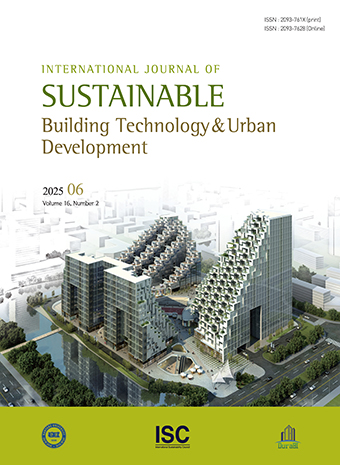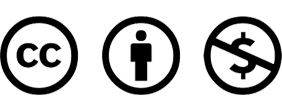General Article
ONR CEN TS 12390-12: 2011, Testing hardened concrete - Part 12: Determination of the potential carbonation resistance of concrete - Accelerated carbonation method.
ISO 1920-12: 2015, Testing of concrete - Part 12: Determination of the carbonation resistance of concrete - Accelerated carbonation method.
DD CEN/TS 12390-10: 2007, Testing hardened concrete - Part 10: Determination of the relative carbonation resistance of concrete.
RILEM, State-of-the-Art Report RILEM TC 230-PSC: Performance-Based Specifications and Control of Concrete Durability, 2016.
G. Verbeck, Carbonation of Hydrated Portland Cement. in: ASTM Spec. Tech. Publ. (205) (1958), pp. 17-36. ASTM International.
10.1520/STP39460SM. Hamada, Neutralization (carbonation) of concrete and corrosion of reinforcing steel. in: Proc. 5th Int. Symp. Chem. Cem., Tokyo, Japan. (1968), pp. 343-369.
M. Daimon, T. Akiba, and R. Kondo, Through Pore Size Distribution and Kinetics of the Carbonation Reaction of Portland Cement Mortars. J. Am. Ceram. Soc. 54 (1971), pp. 423-428.
10.1111/j.1151-2916.1971.tb12379.xH. Klopfer, The carbonation of external concrete and the control of it. Bautenschutz Bausanier. 1(3) (1978), pp. 86-97.
V.G. Papadakis, M.N. Fardis, and C.G. Vayenas, Physical and Chemical Characteristics Affecting the Durability of Concrete. ACI Mater. J. 88 (1991), pp. 186-196.
10.14359/1993R.F.M. Bakker, Model to calculate the rate of carbonation resistance of concrete under different climatic conditions. Rapp. CEMIJ Bv Lab. Imuiden Holl. (1993).
L. Jiang, B. Lin, and Y. Cai, A model for predicting carbonation of high-volume fly ash concrete. Cem. Concr. Res. 30 (2000), pp. 699-702.
10.1016/S0008-8846(00)00227-1S. Talukdar, N. Banthia, and J.R. Grace, Carbonation in concrete infrastructure in the context of global climate change - Part 1: experimental results and model development. Cem. Concr. Compos. 34(8) (2012), pp. 924-930.
10.1016/j.cemconcomp.2012.04.011B.G. Salvoldi, H. Beushausen, and M.G. Alexander, Oxygen permeability of concrete and its relation to carbonation. Constr. Build. Mater. 85 (2015), pp. 30-37.
10.1016/j.conbuildmat.2015.02.019V.L. Ta, S. Bonnet, T.S. Kiesse, and A. Ventura, A new meta-model to calculate carbonation front depth within concrete structures. Construction and Building Materials. 129 (2016), pp. 172-181.
10.1016/j.conbuildmat.2016.10.103S.O. Ekolu, Model for practical prediction of natural carbonation in reinforced concrete: Part 1-formulation. Cement and Concrete Composites, 86 (2018), pp. 40-56.
10.1016/j.cemconcomp.2017.10.006K. Park and X.Y. Wang, Evaluation of carbonation depth of high calcium fly ash blended concrete. International Journal of Sustainable Building Technology and Urban Development. 10(3) (2019), pp. 125-135.
S. Rathnarajan, B.S. Dhanya, R.G. Pillai, R. Gettu, and M. Santhanam, Carbonation model for concretes with fly ash, slag, and limestone calcined clay - using accelerated and five - year natural exposure data. Cement and Concrete Composites. 126 (2022). DOI: doi.org/10.1016/j.cemconcomp.2021.104329.
10.1016/j.cemconcomp.2021.104329V.G. Papadakis, C.G. Vayenas, and M.N. Fardis, Fundamental modeling and experimental investigation of concrete carbonation. ACI Materials Journal. 88(4) (1991), pp. 363-373.
10.14359/1863A.V. Saetta, The carbonation of concrete and the mechanism of moisture, heat and carbon dioxyde flow through porous materials. Cem. Concr. Res. 23 (1993), pp. 761-772.
10.1016/0008-8846(93)90030-DB. Bary and A. Sellier, Coupled moisture-carbon dioxide-calcium transfer model for carbonation of concrete. Cem. Concr. Res. 34(10) (2004), pp. 1859-1872.
10.1016/j.cemconres.2004.01.025F. Georget, J.H. Prévost, and B. Huet, Impact of the microstructure model on coupled simulation of drying and accelerated carbonation. Cem. Concr. Res. 104 (2018), pp. 1-12.
10.1016/j.cemconres.2017.11.008M. Thiery, G. Villain, P. Dangla, and G. Platret, Investigation of the carbonation front shape on cementitious materials: Effects of the chemical kinetics. Cement and Concrete Research. 37 (2007), pp. 1047-1058.
10.1016/j.cemconres.2007.04.002N. Seigneur, E. Kangni-Foli, V. Lagneau, A. Dauzères, S. Poyet, P. Le Bescop, E. L'Hôpital, and J.-B. d'Espinose de Lacaillerie, Predicting the atmospheric carbonation of cementitious materials using fully coupled two-phase reactive transport modelling. Cem. Concr. Res. 130 (2020).
10.1016/j.cemconres.2019.105966N. Hyvert, A. Sellier, F. Duprat, P. Rougeau, and P. Francisco, Dependency of C-S-H carbonation rate on CO2 pressure to explain transition from accelerated tests to natural carbonation. Cem. Concr. Res. 40(11) (2010), pp. 1582-1589.
10.1016/j.cemconres.2010.06.010D. Jung and H. Lee, An analytical study on the prediction of carbonation velocity coefficient using deep learning algorithm. International Journal of Sustainable Building Technology and Urban Development. 10(4) (2019), pp. 205-215.
A. Majlesi, H. Khodadadi Koodiani, O. Troconis de Rincon, A. Montoya, V. Millano, A.A. Torres-Acosta, and B.C. Rincon Troconis, Artificial neural network model to estimate the long-term carbonation depth of concrete exposed to natural environments. Journal of Building Engineering, 74 (2023), 106545.
10.1016/j.jobe.2023.106545L.J. Parrott, A review of carbonation in reinforced concrete. Cement and Concrete Association. 1987, 773378 BRE, 42 p.
CEB-FIP, Structural concrete - textbook on behaviour, design and performance, updated knowledge of the CEB-FIP Model Code, 1990. Bulletins 1-3.
RILEM, Durability Design of Concrete Structures, RILEM REPORT 14 (A. Sarja & E. Vesikari, eds), E & FN Spon, UK, 1996, 165 p.
C. Gehlen and C. Sodeikat, Maintenance planning of reinforced concrete structures: redesign in a probabilistic environment, inspection, update and derived decision making, Durability of Building Materials and Components. Proceedings of the 9th International Conference. 17-20th March 2002, Brisbane, Australia, (2002).
I.-S. Yoon, O. Copuroglu, and K.-B. Park, Effect of global climatic change on carbonation progress of concrete. Atmospheric Environment. 41 (2007), pp. 7274-7285.
10.1016/j.atmosenv.2007.05.028A.A. Yunusa, The effects of materials and micro-climate variations on predictions of carbonation rate in reinforced concrete in the inland environment, PhD Thesis, School of Civil Engineering & the Built Envir, Univ. of the Witwatersrand, Johannesburg, RSA, 2014.
Q. Huy Vu, G. Pham, A. Chonier, E. Brouard, S. Rathnarajan, R. Pillai, R. Gettu, M. Santhanam, F. Aguayo, K.J. Folliard, M.D. Thomas, T. Moffat, C. Shi, and A. Sarnot, Impact of different climates on the resistance of concrete to natural carbonation. Constr. Build. Mater. 216 (2019), pp. 450-467.
10.1016/j.conbuildmat.2019.04.263A. Durán-Herrera, J.M. Mendoza-Rangel, E.U. De-Los-Santos, F. Vázquez, P. Valdez, and Dale P. Bentz, Accelerated and Natural Carbonation of Concretes with Internal Curing and Shrinkage/Viscosity Modifiers. Materials and Structures. (2013).
10.1617/s11527-013-0226-yT.R. Marrero and E.A. Mason, Gaseous Diffusion Coefficients. Journal of Physical and Chemical Reference Data. 1(1) (1972), pp. 3-118.
10.1063/1.3253094J.P. Balayssac, Ch. H. Dériché, and J. Grandet, Effects of curing upon carbonation of concrete. Construction and Building Materials. 9(2) (1995), pp. 91-95.
10.1016/0950-0618(95)00001-VZ.P. Bazant and L.J. Najjar, Nonlinear water diffusion in non-saturated concrete. Mater. Constr. 5(1) (1972), pp. 3-20.
10.1007/BF02479073Tutiempo climate data [Online], 2024. Available at: https://fr.tutiempo.net/climat [Accessed 06/2023].
A. Younsi, P. Turcry, E. Rozière, A. Aït-Mokhtar, and A. Loukili, Performance-based design and carbonation of concrete with high fly ash content. Cement and Concrete Composites. 33(10) (2011), pp. 993-1000.
10.1016/j.cemconcomp.2011.07.005H. Al-Khayat, M.N. Haque, and N.I. Fattuhi, Concrete carbonation in arid climate. Materials and Structures/Matériaux et Constructions. 35 (2002), pp. 421-426.
10.1007/BF02483146H.A. Nasrallah, R.C. Balling Jr, S.M. Madi, and L. Al-Ansari, Temporal variations in atmospheric CO2 concentrations in Kuwait City, Kuwait with comparisons to Phoenix, Arizona, USA. Environ Pollut. 121(2) (2003), pp. 301-305.
10.1016/S0269-7491(02)00221-X12521116A. Leemann and F. Moro, Carbonation of concrete: the role of CO2 concentration, relative humidity and CO2 buffer capacity. Materials and Structures. 50(30) (2017).
10.1617/s11527-016-0917-2M. Bertin, Impact du séchage au jeune âge sur la carbonatation des matériaux cimentaires avec additions minérales. Universite Paris-Est-Marne-La-Vallee, 2017.
M.D. Nguyen, Modélisation des couplages entre hydratation et dessiccation des matériaux cimentaires à l'issue du décoffrage. Étude de la dégradation des propriétés de transfert. Ecole nationale des ponts et chaussées - ENPC PARIS / MARNE LA VALLEE, 2009.
M. Boumaaza, B. Huet, G. Pham, P. Turcry, A. Aït-Mokhtar, and C. Gehlen, A new test method to determine the gaseous oxygen diffusion coefficient of cement pastes as a function of hydration duration, microstructure, and relative humidity. Mater. Struct. Constr. 51 (2018).
10.1617/s11527-018-1178-zP. Linares, C. Andrade, D. Baza, Advances in Characterization of Gas Transport in Concrete: Determination of Oxygen Diffusion Coefficient from Permeability Coefficient and Porosity. 2019, in: C. Andrade, J. Gulikers, E. Marie-Victoire (Eds.), Serv. Life Durab. Reinf. Concr. Struct., Springer International Publishing, Marne-la-Vallée.
10.1007/978-3-319-90236-4_7V. Dutzer, W. Dridi, S. Poyet, P. Le Bescop, and X. Bourbon, The link between gas diffusion and carbonation in hardened cement pastes. Cem. Concr. Res. 123 (2019), 105795.
10.1016/j.cemconres.2019.105795A. Leemann, R. Loser, B. Münch, and P. Lura, Steady-state O2 and CO2 diffusion in carbonated mortars produced with blended cements. Mater. Struct. 50 (2017), 247.
10.1617/s11527-017-1118-3M. Boumaaza, P. Turcry, B. Huet, and A. Aït-Mokhtar, Influence of carbonation on the microstructure and the gas diffusivity of hardened cement pastes. Constr. Build. Mater. 253 (2020), 119227.
10.1016/j.conbuildmat.2020.119227W. Soja, Carbonation of low carbon binders, PhD dissertation, École Polytechnique Fédérale de Lausanne, 2019. DOI: 10.5075/epfl-thesis-9400.
Z. Wu, H.S. Wong, and N.R. Buenfeld, Transport properties of concrete after drying-wetting regimes to elucidate the effects of moisture content, hysteresis and microcracking. Cem. Concr. Res. 98 (2017), pp. 136-154.
10.1016/j.cemconres.2017.04.006D. Benavente and C. Pla, Effect of pore structure and moisture content on gas diffusion and permeability in porous building stones. Mater. Struct. 51 (2018), 21.
10.1617/s11527-018-1153-8C. Andrade, Evaluation of the degree of carbonation of concretes in three environments. Constr. Build. Mater. 230 (2020).
10.1016/j.conbuildmat.2019.116804C. Andrade, M. Sanjuán, C. Andrade, and M.Á. Sanjuán, Updating Carbon Storage Capacity of Spanish Cements. Sustainability. 10 (2018).
10.3390/su10124806M. Boumaaza, B. Huet, P. Turcry, and A. Aït-Mokhtar, The CO2-binding capacity of synthetic anhydrous and hydrates: Validation of a test method based on the instantaneous reaction rate. Cem. Concr. Res. 135 (2020), 106113.
10.1016/j.cemconres.2020.106113S. Steiner, B. Lothenbach, T. Proske, A. Borgschulte, and F. Winnefeld, Effect of relative humidity on the carbonation rate of portlandite, calcium silicate hydrates and ettringite. Cem. Concr. Res. 135 (2020), 106116.
10.1016/j.cemconres.2020.106116NF EN 16757: 2017, Sustainability of construction works - Environmental product declarations - Product category rules for concrete and concrete elements.
K. Adam, Mathematics of moving boundary problems in diffusion, Doctor of Philosophy thesis, Department of Mathematics, University of Wollongong, 1985. Available at: https://ro.uow.edu.au/theses/1553.
M.S.M. Selim, Heat and mass transfer with a moving boundary, Iowa State University, 1970. Available at: https://lib.dr.iastate.edu/rtd/4266.
R. Neves, F. Branco, and J. de Brito, Field assessment of the relationship between natural and accelerated concrete carbonation resistance. Cem. Concr. Compos. 41 (2013), pp. 9-15.
10.1016/j.cemconcomp.2013.04.006- Publisher :Sustainable Building Research Center (ERC) Innovative Durable Building and Infrastructure Research Center
- Publisher(Ko) :건설구조물 내구성혁신 연구센터
- Journal Title :International Journal of Sustainable Building Technology and Urban Development
- Volume : 15
- No :2
- Pages :176-197
- Received Date : 2024-02-15
- Accepted Date : 2024-05-02
- DOI :https://doi.org/10.22712/susb.20240014




 International Journal of Sustainable Building Technology and Urban Development
International Journal of Sustainable Building Technology and Urban Development










